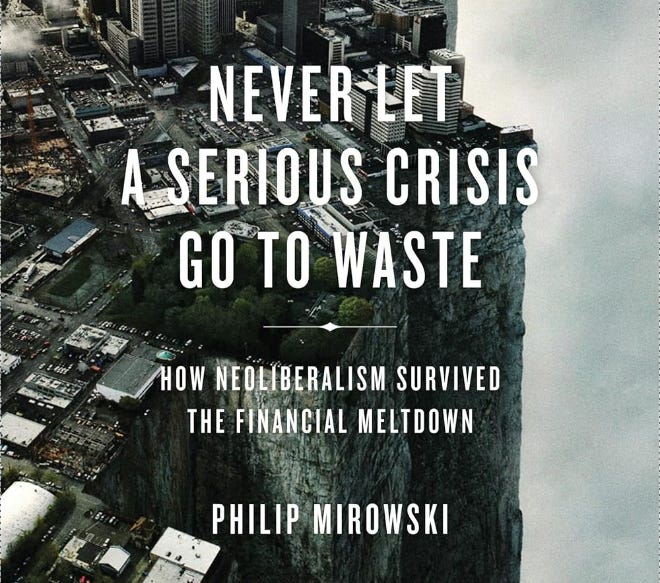Yves here. Only now is the media taking much notice of the fact that many solar rooftop sales were designed to create financial assets, not a product. The US has a proud history of this sort of thing. The 19th century railroad-building boom took place to create stock offering, not rolling stock. They went bankrupt in droves despite the apparent utility of having rail lines. But railroads have huge fixed costs and comparatively low marginal costs. Many of these railroads competed with each other. So they’d routinely get into profit-wrecking price wars.
Reader Quarterback gave a good explanation of one scheme in comments:
Re solar industry article, I remember when the solar boom was rolling through my area around 2010. A coworker raved about his “sweet deal” to get solar panels installed at his home “for free” (which was actually “no money down”). He gave me a copy of his contract so that I could consider it for myself.
The (very long) contract included a clause to commit to purchase a fixed minimum volume of electric power at a fixed price, (albeit at a lower price) for the term. This pricing included modest increases over time. The sales talking point was “electric prices are never going to go DOWN”. The problem was that the contract made it clear that there was no way to get out of this commitment, so if your house burned down, or if you took a long vacation, you are still obligated to buy the electricity. It even had a clause that kept you on the hook if the property was sold. You could transfer the contract over to a new buyer, but only if approved by the solar company.
It was obvious to me that the whole point was to create an electricity futures vehicle that could then be sold (almost immediately) to fixed income investors.
An additional concern I had was how capable would the solar company be to fulfill its obligations in the out years after it had converted these energy futures into quick cash, which would likely exit the books as exec bonuses? Solar panels typically have an effective lifespan of 20 years, so at end of life, would the company even have the money to dispose of the old panels (which are considered toxic waste due to the heavy metals)?
Part of the economics of the deal included the assumption that the electricity generated by the solar cells would be resold to the grid to offset the homeowners costs. The problem is that on the way to end of life, the efficiency of solar panels drops very quickly over a few years.
I declined to jump on board.
By Thomas Neuburger. Originally published at God’s Spies
An AI-generated depiction of rooftop solar
“All markets will do is create incentives to cheat.”
—Cory Doctorow“The problem is to get people to subordinate themselves to The Market. This is called ‘freedom.’”
—Philip Mirowski“What about the American political system requires billionaires be paid before anything good occurs?”
—Yours truly
An important piece by Cory Doctorow makes several important points: about AI “reward hacking,” rooftop solar, and Wall Street. Let’s look at each, and discuss an additional point — the reason all this occurred.
The article starts:
Solar is a market for (financial) lemons
Rooftop solar is the future, but it’s also a scam. It didn’t have to be, but America decided that the best way to roll out distributed, resilient, clean and renewable energy was to let Wall Street run the show. They turned it into a scam, and now it’s in terrible trouble. which means we are in terrible trouble.
That sets the stage.
AI and Reward Hacking
If you watch the video below, you will learn that AI solves problems without understanding anything about the problem but the literal problem itself.
That leads to what Bruce Schneier called “reward hacking.” Here’s Doctorow’s explanation:
For example: if you use an AI to come up with a Roomba that doesn’t bang into furniture, you might tell that Roomba to avoid collisions. However, the Roomba is only designed to register collisions with its front-facing sensor. Turn the Roomba loose and it will quickly hit on the tactic of racing around the room in reverse, banging into all your furniture repeatedly, while never registering a single collision[.]
And here’s a video explaining the same concept:
Maybe AI will kill us because it’s so dumb.
Soulless Corporations
But Doctorow’s piece isn’t about AI. It’s about corporations and how like AI they are, in all the worst ways.
Both Ted Chiang and Charlie Stross have theorized that the source of these anxieties isn’t AI – it’s corporations. Corporations are these equilibrium-seeking complex machines that can’t be programmed, only prompted. CEOs know that they don’t actually run their companies, and it haunts them[.]
In the following, note the pivot in the middle, from AI to “markets.”
Stross calls corporations “Slow AI,” a pernicious artificial life-form that acts like a pedantic genie, always on the hunt for ways to destroy you while still strictly following your directions. Markets are an extremely reliable way to find the most awful alignment problems – but by the time they’ve surfaced them, they’ve also destroyed the thing you were hoping to improve with your market mechanism.
Corporations are pernicious AI, according to this analysis. They have minds (or non-minds) of their own, that only seek goals. In the corporate case, the goal is “make the most money.”

Like AI, corporations, fed by whatever is wicked in its executives, will find the least moral way to do that, because morality (“Thou shalt not kill”) is all about brakes, and corporations are all about flooring the accelerator.
Financialized Solar
The main point of Doctorow’s piece is rooftop solar; in particular, financialized rooftop solar:
The problem starts with a pretty common finance puzzle: solar pays off big over its lifespan, saving the homeowner money and insulating them from price-shocks, emergency power outages, and other horrors. But solar requires a large upfront investment, which many homeowners can’t afford to make. To resolve this, the finance industry extends credit to homeowners (lets them borrow money) and gets paid back out of the savings the homeowner realizes over the years to come.
But all this depended on homeowners actually wanting to spend the money. Which they didn’t, not on sufficient quantity to meet the government goal of accelerated rollout. So the government created subsidies that homeowners could get. The idea was, those subsidies would fuel the market demand for the finance industries loans.
The government created subsidies – tax credits, direct cash, and mixes thereof – in the expectation that Wall Street would see all these credits and subsidies that everyday people were entitled to and go on the hunt for them. And they did! Armies of fast-talking sales-reps fanned out across America, ringing dooorbells and sticking fliers in mailboxes, and lying like hell about how your new solar roof was gonna work out for you.
As with the subprime mortgage market, where the toxic loans were turned into investment vehicles (derivatives), so was solar indebtedness financialized. Why this is a problem, and what kind of problem it is, is best explained by pointing to this hard-titled piece in Time: “The Rooftop Solar Industry Could Be on the Verge of Collapse.”
A decade ago, someone knocking on your door to sell you solar panels would have been selling you solar panels. Now, they are probably selling you a financial product—likely a lease or a loan.
Mary Ann Jones, 83, didn’t realize this had happened to her until she received a call last year from GoodLeap, a financial technology company, saying she owed $52,564.28 for a solar panel loan that expires when she’s 106, and costs more than she originally paid for her house. […]
The least moral way to roll out rooftop solar.
The Global Neoliberal Project
Doctorow correctly identifies the solution: “If governments are willing to spend billions incentivizing rooftop solar, they can simply spend billions installing rooftop solar – no Slow AI required.”
But let’s go one step farther. The primary goal of neoliberalism and what we ought to call the Neoliberal Project is “creating a world economy where entrepreneurs could let their fortunes bloom unimpeded by negative government intervention.” Nothing gets in the way of making more money.
Philip Mirowski has since said that neoliberalism evolved from that — government not impeding profit-making — to making sure the government actively promotes the “blooming” of fortunes.

So we can ask, paraphrasing Doctorow, “if governments are willing to spend billions incentivizing (enriching) the rich, why can’t they spend the same on the actual goal?”
The answer is simple — the global Neoliberal Project, where the only goal of government is to enrich the rich, and everything else is second.
Or put differently: What about the American political system requires billionaires be paid before anything good occurs? The answer: The system doesn’t exist for you. Because freedom.
If you want to know why your grandchildren could be hunter-gatherers — and their parents as well — long before they die, you’ve just read the reason. Billionaires and the project that sustains their wealth.
Cory Doctorow is fighting another war, to produce an audio book that’s not chained to Audible. If you want to help, click here.


